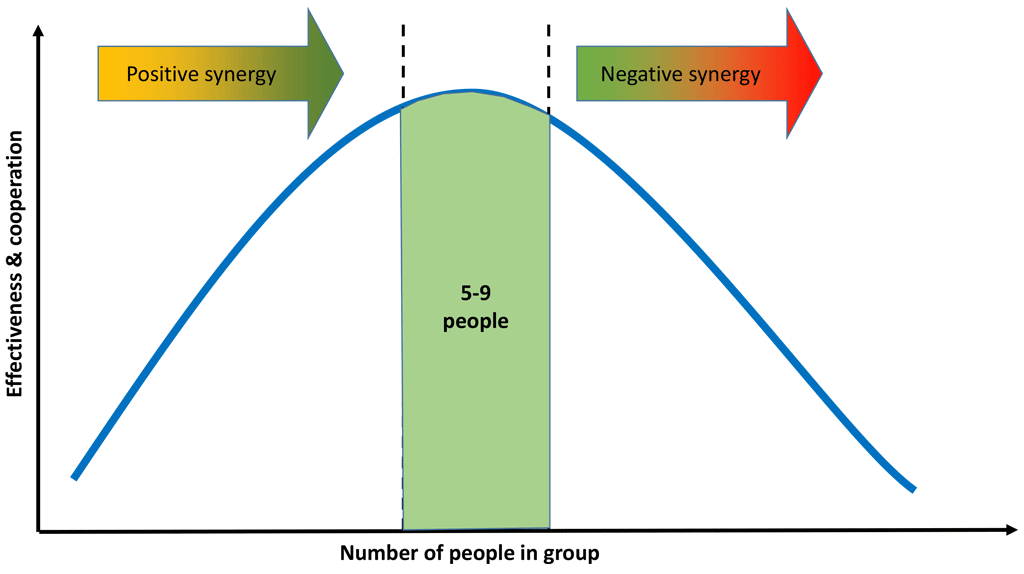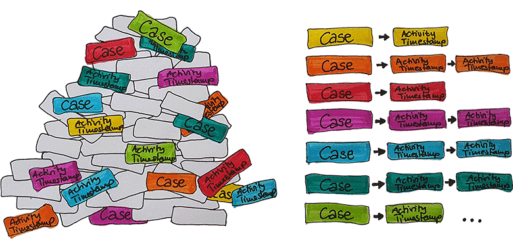The Two Pizza Rule

February 9th is National Pizza Day – at least in the USA. What a great opportunity to share with you a helpful rule for successful meetings, which not only comes from the USA but has been inspired by pizza: the Two Pizza Rule from Amazon boss Jeff Bezos. Get ready to tuck in!
Why are meetings considered the biggest time waster in the business world? The furnace of vanity and self-promotion which can easily blaze without a fixed set of meeting rules can quickly lead to inefficiency. Common meeting errors include:
- No agenda
- Excessive discussion
- Whiners who can kill discussion with a single phrase
- No, or insufficient chairing
- No minutes being taken
- The wrong number – or combination – of attendees.
What is the Two Pizza Rule?
The latter point, who and how many are attending, has a particularly significant impact on a meeting’s productivity. To help his meetings run smoothly and successfully, Amazon boss Jeff Besos came up with the Two Pizza Rule. Basically, meetings at Amazon should only have as many attendees as could comfortably share two pizzas. To this end, Two-Pizza teams were created, with the number of participants determined by the size of the doughy Italian delicacy. A standard American pizza (⌀ 40 cm) counts as four portions. Therefore, Amazon meetings are limited to a maximum of 8 people. This is also known as the two pizza team concept, and the science behind it has even been confirmed by Stanford University[1]. They discovered in their research that the most productive meetings have 7 ± 2 participants.

According to the Stanford study, meetings with over 9 attendees are unproductive, as friction grows in proportion to the increase in participant numbers. However, in meetings with under 5 people, you run the risk of the participants falling into groupthink. This means people in a group tending to fall in with the majority view, despite actually having a different opinion or even being convinced that the wrong decision is being made. This phenomonen can have a number of causes, including not wanting to rock the boat, anxiety, wanting to belong or a other cognitive behavioural reasons.
Two Pizza Rule: You’ll never have too few again
Smaller meetings can generate a feeling of intimacy which often leads to bolder and franker discussions. Fewer participants also mean more time to listen to and consider everyone’s perspective. In turn, the group members feel heard and respected, making them more productive. This measure of openness and clarity in a small meeting can mean that measures and results can be more easily reconciled. If teams are small, they are able to stay agile and make decisions more quickly.
However, meeting with fewer than five participants could easily lead to ʽgroupthinkʼ, as stronger personalities influence the others. Smaller groups also mean a more narrow variety of perspectives and opinions as well as a lower variety of experience and networks, all of which can have a knock-on effect on the quality of the decisions made.
Two Pizza Rule: You’ll never have too many again
There are four main reasons why problems can occur when a group has exceeded its optimal size:
- Larger teams can create an overwhelming mental load for the individual members.
- Once a group has exceeded its optimum number of people, each member needs to spend more time on coordination and planning, which means they have less time for the work itself.
- There is a higher rate of delegating between team members, which is prone to errors and misunderstandings.
- As each team member now needs to pay attention to a higher number of people, the social cohension of the group will become weaker, negatively affecting cooperation and direction in the long term.
The consequence is that members of over-sized groups tend to lose respect for the meetings. They prepare less in advance and start to take a more passive -even resigned – role. The bigger the group, the lower an individual‘s expectation that her involvement will be noticed. This is the start of a downward spiral into extremely unproductive meetings.
The Two Pizza Rule in Practice
But how can you actually keep meeting numbers down? Here are some tips if the number of attendees is creeping up.
- Tell the team in advance that there will be some changes in the group and explain why these are necessary. If a colleague then isn’t invited, he won’t be insulted or surprised.
- Think before you invite! Who actually needs to be there? Who would just be twiddling his thumbs? Who can provide a unique perspective? Who won’t offer anything new?
- Define responsibilities. Tell those you’ve invited what you expect from them, and that they’ll be responsible for conveying the content of the meeting to those who haven’t participated.
So, now you know how to put together a crack team for a successful meeting. If you also follow another of the Two-Pizza Rule man Jeff’s rules, namely the ʽbefore lunchʼ rule, and schedule your meeting for 10am, you will have the perfect conditions for focussed and efficient team work. You can then follow this by sharing two pizzas for lunch. Yum!
[1] https://www.linkedin.com/pulse/20140303152358-15893932-why-big-teams-suck/
[2] Image based on Zwei Pizza Regel: Jeff Bezos’ Trick für produktivere Meetings (karrierebibel.de)
Thank you for your message
We appreciate your interest in SEEBURGER
Get in contact with us:
Please enter details about your project in the message section so we can direct your inquiry to the right consultant.
Written by: Andres Mathot
Andres Mathot has been working for SEEBURGER as an e-invoicing expert since 2015. As a customer contact for SEEBURGER e-invoicing solutions, he is responsible for consulting, planning, implementing, monitoring, testing and signing off implementation projects. Working together with our customers, he defines a customer‘s e-invoicing needs and how to best implement them, whether cloud-based or on-premises, for both incoming and outgoing invoices.





